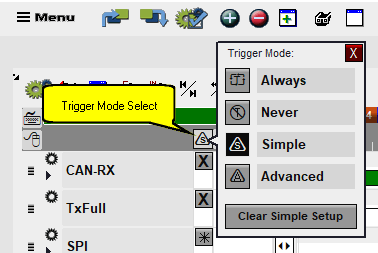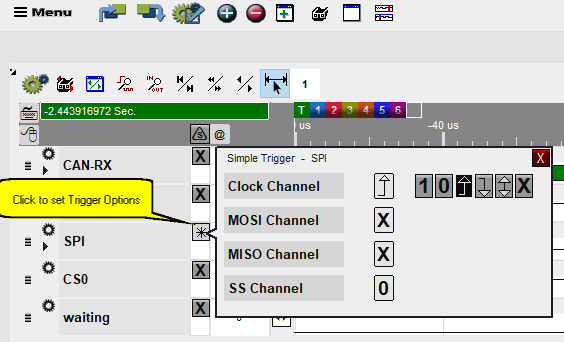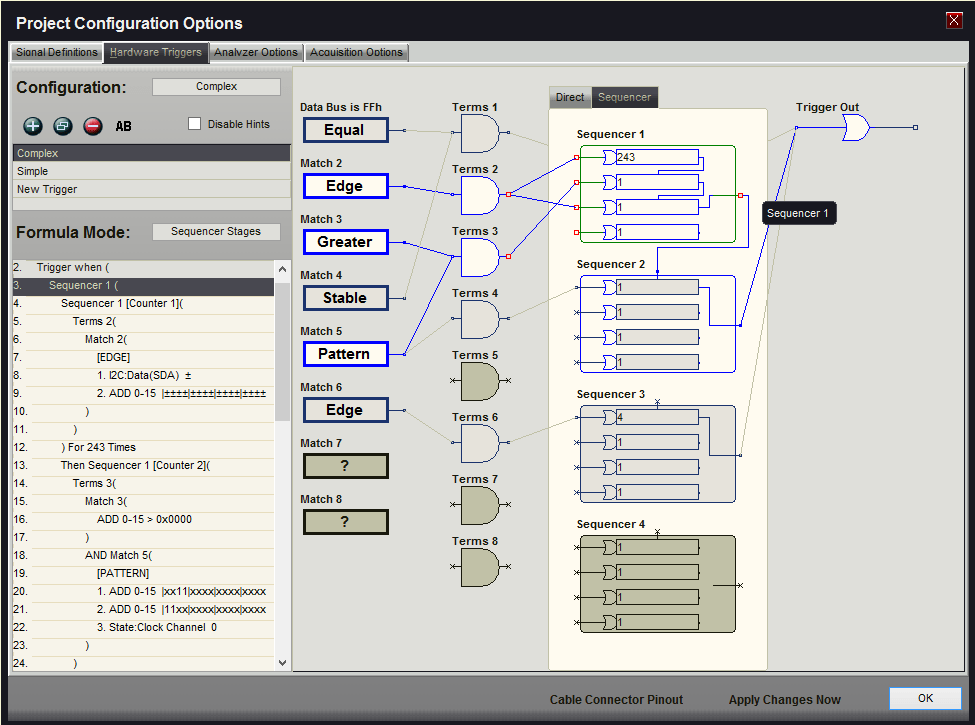Trigger Configuration
We know that advanced trigger circuits are essential to any logic analyzer, but we also realize that most of the time, your trigger needs are modest. With this in mind, we provide several different ways to configure the trigger hardware. Simple, common setups are quick and easy to configure directly in the waveform view. For advanced needs, we manage the complexity so that you can fully control all of the trigger features in a direct, easy to comprehend manner.
Mode selection
We made it easy to select the trigger mode by clicking the icon at the top of the trigger column.
When in 'simple' mode, you can easily set the trigger criteria for each signal by clicking the icon in the trigger column directly in the waveform view.
Advanced trigger settings are configured in a dedicated dialog.
When in 'simple' mode, you can easily set the trigger criteria for each signal by clicking the icon in the trigger column directly in the waveform view.
Advanced trigger settings are configured in a dedicated dialog.

-
Always
This mode triggers the capture as soon as it sees activity on any of the defined signals. The capture will then run until the buffer fills or you press STOP. This is useful if you want a normal capture, but don't really need a specific trigger condition. There are no configuration options. -
Never
This mode never triggers. The DigiView starts capturing when you press RUN, and continues to capture in ring-buffer style until you press STOP. This is useful when you want to see the most recent activity leading up to the time you manually stopped the capture. There are no configuration options. -
Simple
- Configured by clicking in the Trigger column next to each signal, directly in the waveform view.
- Each Bool can be set to any of X,0,1,⮥,⮧, or ⭥
- You can also expand BUS and Protocol signals and configure their child signals directly.
- Triggers when ALL defined levels (X,0,1) match and ANY defined edge (⮥,⮧,⭥) occurs.
- Very easy to setup and change, but still more powerful than many logic analyzers.

- Configured by clicking in the Trigger column next to each signal, directly in the waveform view.
-
Advanced
- Full access to all trigger resources
- Presented in schematic and equation forms for easy visualization
- Avoids need to write and comprehend deeply nested equations involving duration qualifiers, repeat counts, data-masks, and sequencers.
- Click on any element to see the equation up to that point
- Double-click an element to edit
- Connect elements with 'wires' - like drawing a schematic
- Can configure to look for up to 4 trigger conditions at once.
- Trigger manager
- Create multiple, named trigger setups
- Quickly switch between them
- Clone and tweak existing trigger
- Full access to all trigger resources

Video Help

Never & Always Trigger

Simple Trigger

Advanced Trigger Overview